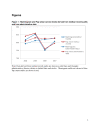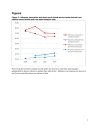Measuring data reliability for preventive services in electronic medical records
- PMID: 22583552
- PMCID: PMC3442990
- DOI: 10.1186/1472-6963-12-116
Measuring data reliability for preventive services in electronic medical records
Abstract
Background: Improvements in the quality of health care services are often measured using data present in medical records. Electronic Medical Records (EMRs) contain potentially valuable new sources of health data. However, data quality in EMRs may not be optimal and should be assessed. Data reliability (are the same data elements being measured over time?) is a prerequisite for data validity (are the data accurate?). Our objective was to measure the reliability of data for preventive services in primary care EMRs during the transition to EMR.
Methods: Our data sources were randomly selected eligible patients' medical records and data obtained from provincial administrative datasets. Eighteen community-based family physicians in Toronto, Ontario that implemented EMRs starting in 2006 participated in this study. We measured the proportion of patients eligible for a service (Pap smear, screening mammogram or influenza vaccination) that received the service. We compared the change in rates of selected preventive services calculated from the medical record audits with the change in administrative datasets.
Results: In the first year of EMR use (2006) services decreased by 8.7% more (95% CI -11.0%- - 6.4%, p < 0.0001) when measured through medical record audits as compared with administrative datasets. Services increased by 2.4% more (95% CI 0%-4.9%, p = 0.05) in the medical record audits during the second year of EMR use (2007).
Conclusion: There were differences between the change measured through medical record audits and administrative datasets. Problems could include difficulties with organizing new data entry processes as well as continued use of both paper and EMRs. Data extracted from EMRs had limited reliability during the initial phase of EMR implementation. Unreliable data interferes with the ability to measure and improve health care quality.
Figures
Similar articles
-
Implementation of electronic medical records: effect on the provision of preventive services in a pay-for-performance environment.Can Fam Physician. 2011 Oct;57(10):e381-9. Can Fam Physician. 2011. PMID: 21998246 Free PMC article.
-
Assessing methods for measurement of clinical outcomes and quality of care in primary care practices.BMC Health Serv Res. 2012 Jul 23;12:214. doi: 10.1186/1472-6963-12-214. BMC Health Serv Res. 2012. PMID: 22824551 Free PMC article.
-
Illustrating the patient journey through the care continuum: Leveraging structured primary care electronic medical record (EMR) data in Ontario, Canada using chronic obstructive pulmonary disease as a case study.Int J Med Inform. 2020 Aug;140:104159. doi: 10.1016/j.ijmedinf.2020.104159. Epub 2020 May 19. Int J Med Inform. 2020. PMID: 32473567
-
Usability and Safety in Electronic Medical Records Interface Design: A Review of Recent Literature and Guideline Formulation.Hum Factors. 2015 Aug;57(5):805-34. doi: 10.1177/0018720815576827. Epub 2015 Mar 23. Hum Factors. 2015. PMID: 25850118 Review.
-
Interventions to improve the use of EMRs in primary health care: a systematic review and meta-analysis.BMJ Health Care Inform. 2019 May;26(1):0. doi: 10.1136/bmjhci-2019-000023. BMJ Health Care Inform. 2019. PMID: 31142493 Free PMC article.
Cited by
-
Agreement of Medicaid claims and electronic health records for assessing preventive care quality among adults.J Am Med Inform Assoc. 2014 Jul-Aug;21(4):720-4. doi: 10.1136/amiajnl-2013-002333. Epub 2014 Feb 7. J Am Med Inform Assoc. 2014. PMID: 24508767 Free PMC article.
-
Monitoring Prevalence, Treatment, and Control of Metabolic Conditions in New York City Adults Using 2013 Primary Care Electronic Health Records: A Surveillance Validation Study.EGEMS (Wash DC). 2016 Dec 15;4(1):1266. doi: 10.13063/2327-9214.1266. eCollection 2016. EGEMS (Wash DC). 2016. PMID: 28154836 Free PMC article.
-
Applications of Machine Learning Using Electronic Medical Records in Spine Surgery.Neurospine. 2019 Dec;16(4):643-653. doi: 10.14245/ns.1938386.193. Epub 2019 Dec 31. Neurospine. 2019. PMID: 31905452 Free PMC article.
-
Utility of linking primary care electronic medical records with Canadian census data to study the determinants of chronic disease: an example based on socioeconomic status and obesity.BMC Med Inform Decis Mak. 2016 Mar 11;16:32. doi: 10.1186/s12911-016-0272-9. BMC Med Inform Decis Mak. 2016. PMID: 26969124 Free PMC article.
-
Reasons for non-response to a direct-mailed FIT kit program: lessons learned from a pragmatic colorectal-cancer screening study in a federally sponsored health center.Transl Behav Med. 2015 Mar;5(1):60-7. doi: 10.1007/s13142-014-0276-x. Transl Behav Med. 2015. PMID: 25729454 Free PMC article.
References
-
- Romanow R. Building on values: the future of health care in Canada. National Library of Canada, Ottawa; 2002.
-
- CIHI CPCSSN data analysis report. cycle 2A. Canadian Institutes for Health Information, Toronto; 2010.
-
- National Physician Survey. http://www.nationalphysiciansurvey.ca/nps/2007_Survey/2007results-e.asp.
Publication types
MeSH terms
LinkOut - more resources
Full Text Sources
Research Materials



